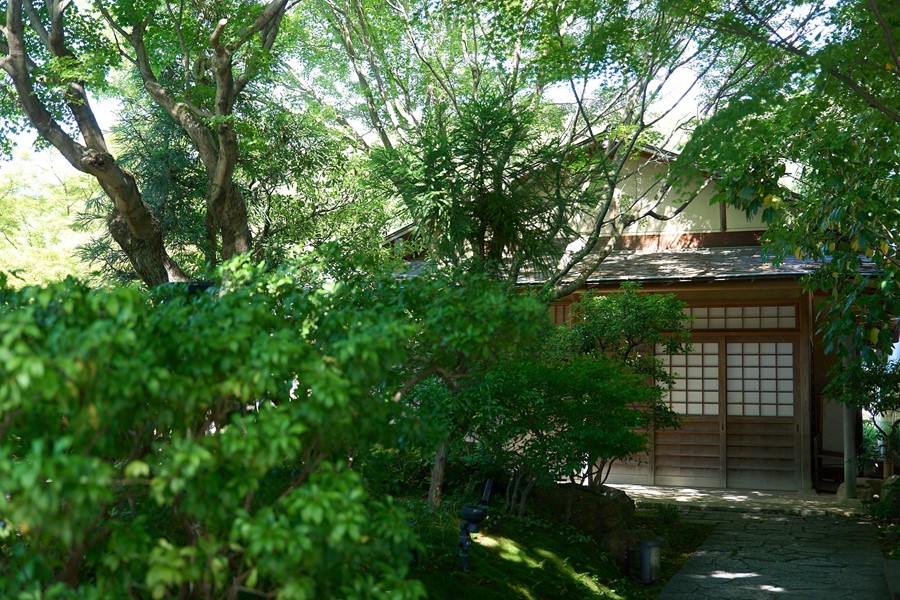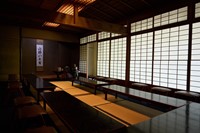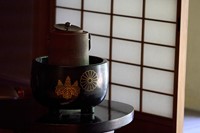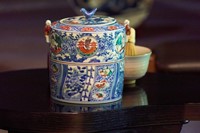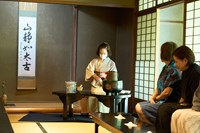Cos has partnered with Tabata Shibori to create a limited-edition collection which celebrates shibori, an ancient Japanese tie-dyeing technique
The Kamo flows through the heart of Kyoto, nourishing its open grassy spaces and the shibori workshops which have been home to a tradition of dying made possible by the clean waters of the region’s rivers over centuries. Over 4,000 artisans now work in the city, and this rich artistic community is attracting big fashion brands including Le Labo’s flagship store, Loewe’s festive collaboration with ceramic studio Suna Fujita, and now Cos.
Cos has partnered with Kuzuki Tabata of Tabata Shibori, one of the last traditional artists working with shibori, for a limited-edition collection that brings together traditional art and modern design. The match feels natural. Both designers place craft at the centre of their process. According to Karin Gustafsson, Cos’s design director, “the Japanese sensibility of simplicity or wabi-sabi, combined with impactful craft, is particularly inspiring to us, embodying a philosophy that resonates deeply with Cos’s values and commitment to timeless design and attention to detail.”
Shibori is a complicated manual process that includes binding, wrapping and dyeing fabric. Each pattern is unique and is only revealed at the end of the process. More than a year in the making, the vivid collaboration includes an oversized kaftan, floaty suits and a gathered a-line maxi dress.
The capsule has a distinct lightness to it. Karin says the starting point was creating shapes that enhanced movement. Semi-sheer fabric is used throughout to replicate the translucence of water. The kaftan has a draped front that enhances the natural movements of the shibori. The trousers are cut in wider shapes that move when you walk to give a feeling of fluidity. The menswear pieces use fabric with a wrinkled, seersucker look.
Exploration is at the core of the collection. Many print variations were sent from Kyoto to London before the collaborators settled on their final choices. The wide silhouette for the kaftan was created from exploring rectangles in the pattern cutting. For the short suit, the dye was printed onto the yarns instead of directly onto ready made fabric, giving a hazy and distorted finish to the print. The most intricate piece (and Mr Tabata’s favourite) is a delicate silk scarf. He used the sekka shibori technique to create a print that resembles snowflakes, lattice and tortoise shell. The simple triangular scarf is the perfect canvas for the sekka shibori pattern.
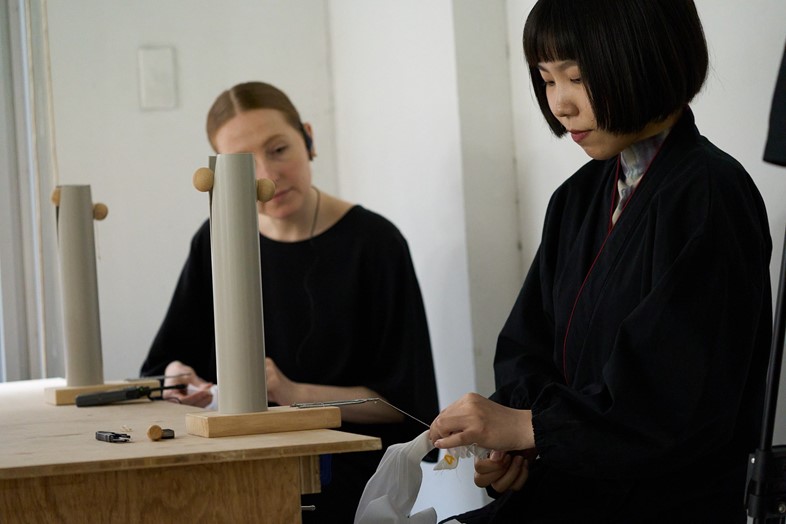
The collection is not only important for showcasing Japanese craftsmanship. It also emphasises the importance of sustainability. As a brand, Cos focuses on creating collections that defy trends. Clothes are created to last in both their physical quality and their aesthetic. The collection is made from sustainable materials such as Tencel Lyocell. Sustainability is also integral to Mr Tabata’s process. All his tools are created from natural materials.
Mr Tabata never intended to be a printmaker. His sound engineering studies ended when his uncle died and his tools were going to be thrown away. “As artisans age and the demand for shibori dyeing declines, often there’s no natural successor,” he says. “I thought, if no one else will do this, then I should.”
He has devoted his life to shibori and is passionate about preserving the tradition for future generations. “These pieces often don’t reach beyond Japan or Kyoto but through our collaboration with Cos, I am thrilled that shibori will be showcased to people all over the world. That, to me as a creator, is the greatest joy.”
